American chestnut
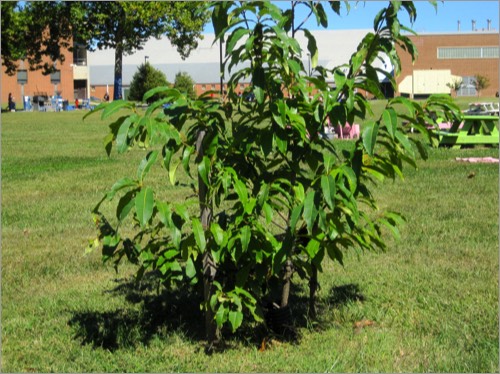
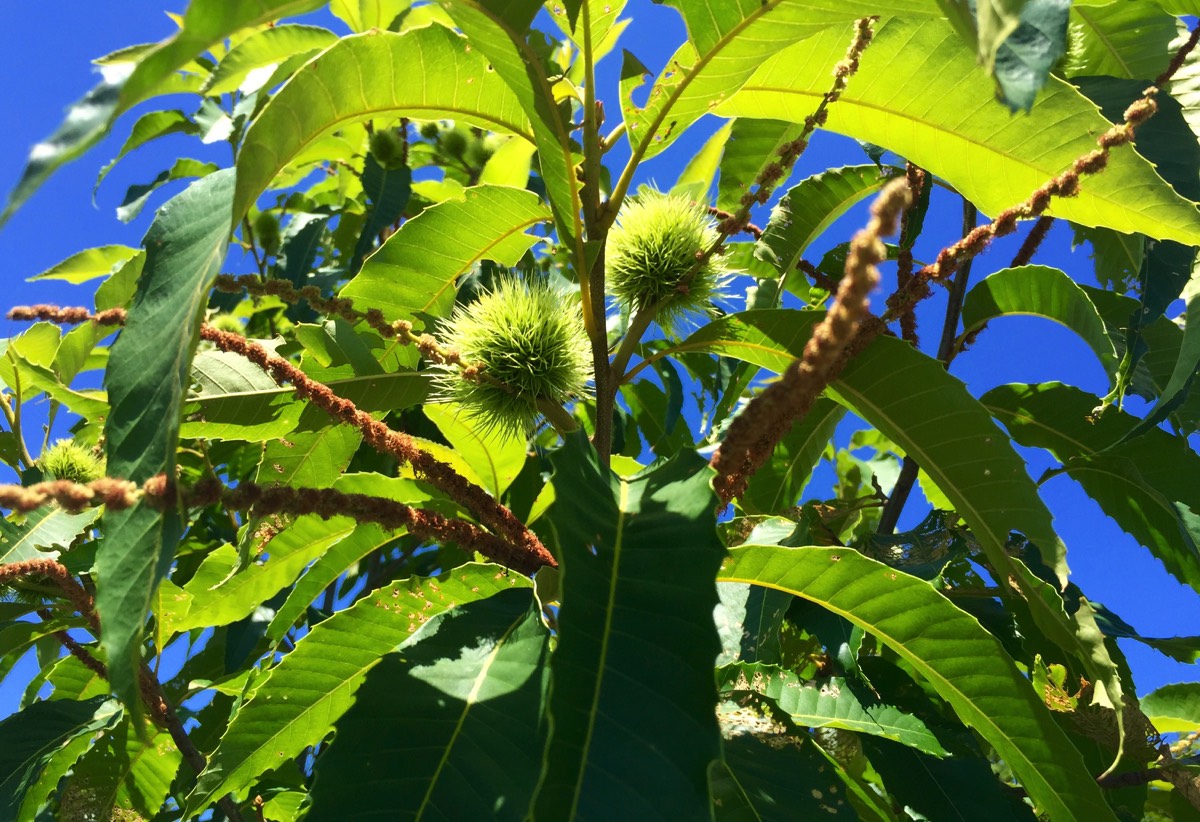
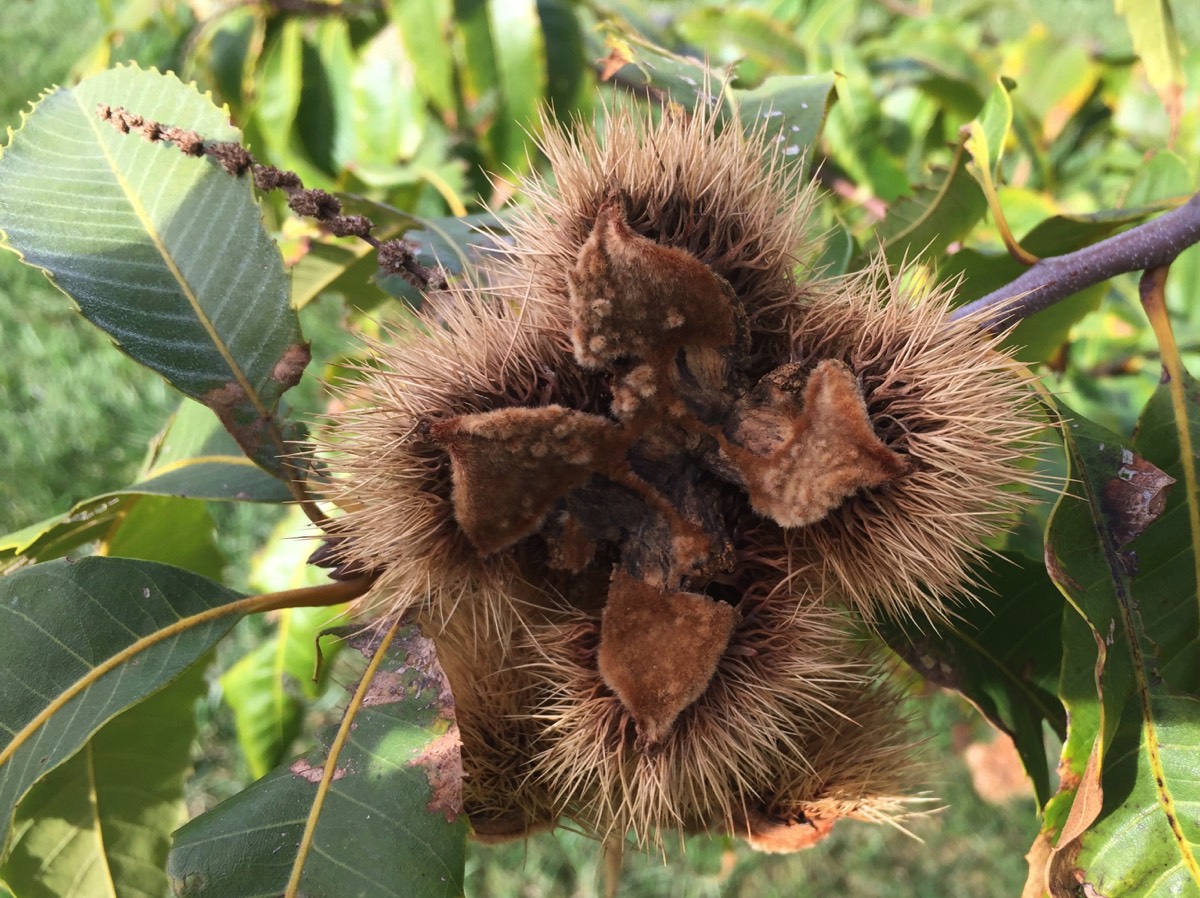
Castanea dentata
AMERICAN CHESTNUT
Fagaceae
E. North America
Location: map coordinates N-15 (southeast of Conwell Hall),
N 39°11'15'' W 75°32'25''
Planting history: planted November 2010. Source: Go Native Tree Farm, PA (seed-grown, blight-resistant, 100% American chestnut; not hybrid). (Dr. S. Yost, USDA NIFA Capacity Building Grant funds).
Description:
Native species, State Rank S4 (common, but not very common, in Delaware)
AMERICAN CHESTNUT
Fagaceae
E. North America
Location: map coordinates N-15 (southeast of Conwell Hall),
N 39°11'15'' W 75°32'25''
Planting history: planted November 2010. Source: Go Native Tree Farm, PA (seed-grown, blight-resistant, 100% American chestnut; not hybrid). (Dr. S. Yost, USDA NIFA Capacity Building Grant funds).
Description:
- deciduous tree
- etymology: Castanea from Latin name castania; dentata = toothed (the leaves)
- formerly very large forest trees, common in the eastern United States. Now virtually eliminated by the chestnut blight, an Asian fungus (Cryphonectria parasitica), first noticed in 1904 on chestnut trees at the Bronx Zoo, NYC. American chestnut trees still grow in our forests as root sprouts from former trees
- leaves simple; toothed
- monoecious (separate male and female flowers on same plant); flowers tiny, unisexual; male flowers in catkins
- fruits spiny, with large nutritious nuts; American chestnuts were formerly important food for humans, wildlife, and livestock. This tree started producing fruits in summer 2015! (Not to be confused with the unrelated and poisonous horse-chestnut [Aesculus hippocastanum])
- fruits symbolic of winter holiday season, e.g. song verses like “chestnuts roasting over an open fire”
- chestnuts now sold in American supermarkets are from non-native species (e.g. Chinese, Japanese, Spanish chestnuts)
- wood was valuable for decay-resistant lumber (furniture, fences etc.), and bark for tanning
- research is underway to develop disease-resistant chestnut trees, particularly by hybridization with Chinese chestnut
Native species, State Rank S4 (common, but not very common, in Delaware)
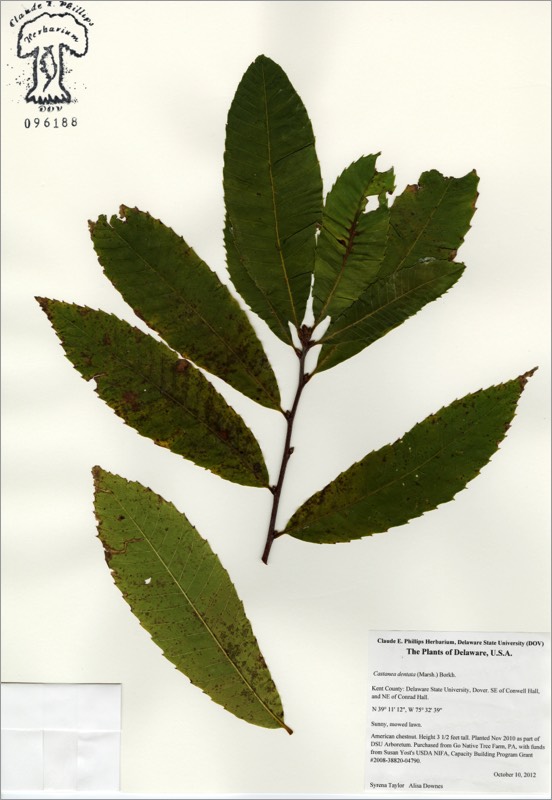
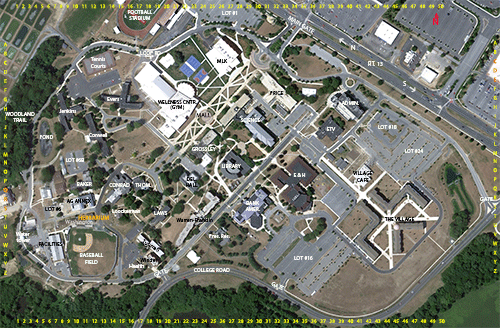
HIT REFRESH TO START LOCATION GRAPHIC